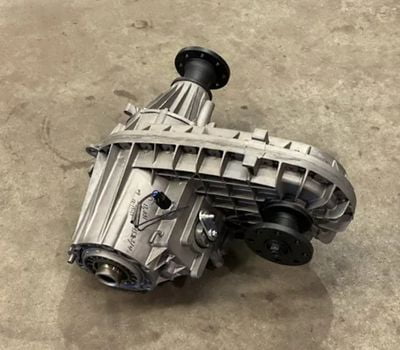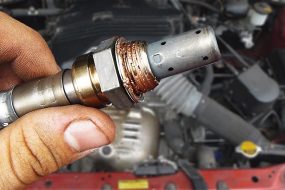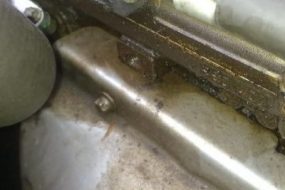
All multiple-powered axle vehicles have a transfer case usually in form of a gearbox and like other moving parts of a 4-wheel drivetrain, the transfer case needs to be lubricated.
Lubricating the transfer case is done using a fluid called ‘Transfer Case Fluid’. This fluid should be replaced as often as possible but what happens if transfer case is low on fluid?
If the transfer case is low on fluid it will not function as it ought to, there will be a fluid puddle under the transfer case location, there will be difficulty in moving hence the grinding and humming noise, and there will be difficulties in changing gears.
What is a Transfer Case?
A transfer case is responsible for directing or transferring power from the vehicle’s transmission to the rear and front axles through the drive shafts. It is usually a part of the drivetrain in 4-wheel drive and all other multi-powered axle vehicles.
The transfer case can be said to be a middleman between the transmission and the axles (front and rear). It receives power from one (transmission) and sends it to the other (front and rear axle).
Depending on the type of vehicle, the transfer case can be controlled by the driver using a shifter or electronically by a switch. In other vehicles such as the all-wheel-drive sports car, the transfer case can be locked.
Do Transfer Cases Need Fluid?
Yes, transfer cases need fluid. The transfer case like other moving parts of a vehicle’s drivetrain needs to be well lubricated to function properly, hence the need for fluid.
Without the fluid, the transfer case is useless and of course, the vehicle won’t operate as it should. In order to get the most out of the transfer case fluid, it should be changed at intervals.
Different vehicles have different recommendations for when the fluid should be changed, so you might want to check out this information in the owner’s manual.
What Happens if Transfer Case is Low on Fluid?
If the transfer case is low on fluid, it will most likely cause premature failure. It will cause premature failure because the transfer case is now running on contaminated fluid.
The transfer case (gearbox) doesn’t have a filter that keeps dirt and debris out, therefore, everything both good and bad goes in with the fluid.
The transfer case’s operation will also be affected. When low on fluid, the transfer case will definitely not function as it usually does which will make the transfer of power between the transmission and axle (front and rear) difficult.
What are the Symptoms of a Low Transfer Case Fluid?
If the transfer case is low on fluid and needs to be refilled there will definitely tell signs and symptoms. Here are some symptoms of a low transfer case fluid;
Fluid Puddle
One symptom of low transfer case fluid is when there is a fluid puddle under the transfer case location.
The transfer case fluid is red in color, therefore if you notice a red puddle under the car it means the transfer case is running out of fluid and needs to be refilled. This color may however change the longer it stays without notice.
Humming Noises and Grinding
Transfer cases are made of moving parts that work well without any obstruction when lubricated. However, when the transfer case is low on fluid there will be difficulty in moving hence the grinding and humming noise.
This noise may be prominent when the vehicle’s speed is changed and can also get louder when there’s a switch to 4-wheel drive.
The noise and grinding could be a result of other issues in the vehicle but it can also be a result of low transfer case fluid.
Finding it Difficult to Change Gears
One of the functions of the fluid in the transfer case is to ensure that the gears are moving smoothly and also prevent friction between parts.
If the fluid gets low, it becomes difficult for the gears to move which also results in difficulty in changing gears.
When to Replace the Transfer Case Fluid?
Like other fluids used in a vehicle, the transfer case fluid needs to be replaced, and knowing when to replace the fluid is as important as changing it. So, when should the transfer case fluid be replaced?
First, you should know that when to replace a transfer case fluid depends on the manufacturer’s recommendation and how the vehicle is been used.
Generally, the transfer case fluid should be changed every 50,000km. But in the case where the vehicle is used for hauling and other heavy-duty and strenuous activities, it should be replaced as often as possible.
Not replacing the transfer case fluid in time will likely result in it losing its ability to lubricate the gears and the wear and tear of the transfer case.
Can You Still Drive with a Bad Transfer Case?
The possibility of driving with a bad transfer case depends on what is wrong with it. Some problems can still permit driving while others are NO.
For problems like the low range going out, it is safe to drive the vehicle. But in cases where the problem is related to the chain or gear giving out then you definitely can’t and shouldn’t drive the vehicle.
Irrespective of whether the problem allows the vehicle to be driven or not, it is not a good idea to drive a vehicle with a bad transfer case. Well, an exception to this may be if you are driving a short distance in order to get the problem fixed.
How Much Does It Cost to Replace a Transfer Case Fluid?
The cost of replacing a transfer case fluid varies according to location and state, it also depends on the type of car. Irrespective of the state, replacing a transfer case fluid should cost between $75 to $160.
The cost also varies according to the auto shop you are using. This cost covers inspection and the actual replacement.
Before replacing the transfer case fluid, the mechanic needs to thoroughly inspect the transfer case fluid in order to know if it is contaminated or not.
For some auto shops, you will be charged separately for labor and replacement or cleaning the gearbox if the fluid is contaminated while some others will just give a total cost.
Conclusion
If you are not sure how often your vehicle’s transfer case fluid should be changed you can always ask your car mechanic or check the owner’s manual.









